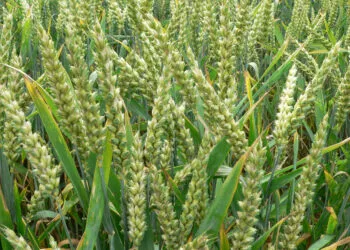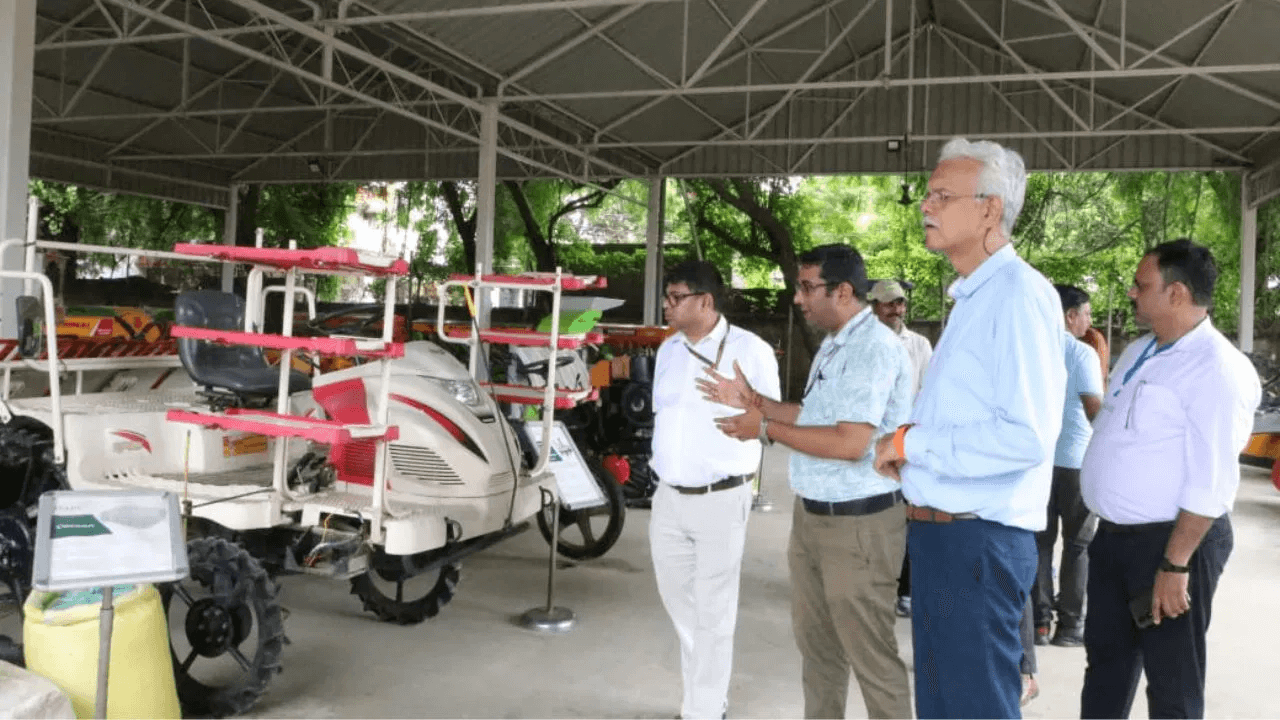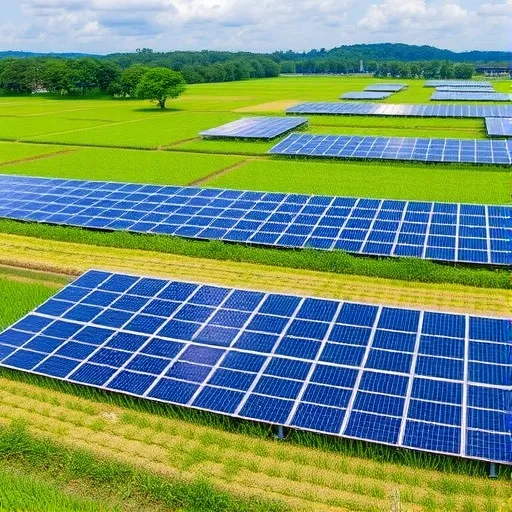Tags
Rice farming causing global warming – Research

A research by a team of engineers and atmospheric scientists at Harvard University, has revealed that increase in rice farming in sub-Saharan Africa is found to be producing rising amounts of methane.
Working with a colleague from the California Institute of Technology’s Jet Propulsion Laboratory, the team calculated the increased amount of methane being expelled into the atmosphere due to increases in rice farming in parts of Africa.
In their paper published in the journal Nature Climate Change, recently the group describes how they recalculated methane emissions due to recent increases in rice production in sub-Saharan Africa, and what they found by doing so.
Prior research has shown that methane is the second most important greenhouse gas behind carbon dioxide, it has been found to have more radioactive properties (it holds in heat better) than CO2, which means that even though far less of it is emitte into the atmosphere, it still plays a major role in global warming.
Prior research has also shown that growing rice in sub-Saharan Africa doubled in production from 2008 to 2018—a good trend for feeding people (it currently accounts for approximately 9% of the continent’s caloric intake) but not so good for the environment. Growing rice releases very large amounts of methane into the atmosphere.
In this new effort, the researchers started with numbers representing Africa’s total greenhouse gas emissions prior to 2008 and then added in the amount that has been emitted due to factors involved in growing rice, such as irrigating, flooding patties, burning fields, and harvesting.
As part of that effort, they assessed the rice-growing extent, which included more accurately outlining rice-growing land and the number of days rice fields in Africa emit methane. They then used what they had learned to calculate new estimates of methane emissions into the atmosphere for all of Africa.
The research team found that the increase in rice production in Africa accounted for approximately 31% of the increases in methane emissions for all of Africa from 2006 to 2017, and 7% of the global rise in methane emissions for the same period.
With this research in view, a Climate Smart Agriculture expert, Dr Ayodele Otaiku, has called for the introduction of regenerative agricultural practices with the use of Aratibiotech climate solution to mitigate methane production in rice production.
He said conventional rice farming is one of the largest sources of (GHG) gases in the world, emitting 2.1 billion tons of carbon dioxide equivalent annually. This is equivalent to burning one billion tons of coal. The GHG emissions associated with farming inputs, on-farm activity, post-harvest production, and transportation.
According to him, regenerative organic agriculture improves the resources it uses, rather than destroying or depleting them. “It is a holistic systems approach to agriculture that encourages continual on-farm innovation for the environment, society and economy.
“The choice and use of regenerative agriculture practices vary by region, context, goals, and history of the farm; there isn’t a “one size fits all” solution. Remember that practices work differently in different farm ecosystems and therefore need to be adapted to the specific context.
“Bio-economy the use of biological feedstocks, or processes involving biotechnology for biowaste recycling techniques developed into bio-based products for soil fertility management and soil health with external construct validity from institutions and certification from regulatory Nigerian regulatory agencies as a ‘new’ trajectory for ‘sustainable capitalism’ and climate change mitigation solution.
“Greening the economy means restructuring agribusiness and infrastructure to provide better returns on investments in natural, human and economic capital.
“Three main pillars must be harmonized: economy, society and environment with the application of regenerative agriculture products such as bio-fertilizer, bio-pesticide, bio-herbicide, plant growth regulator (PGR) and post-harvest cereal bio-protection, Bio-primed seeds for sustained agriculture, soil resilience and climate change management,” he said.
Global food prices declined December 2023 – Report
The Food and Agriculture Organisation Food Price Index (FAO) has revealed that the benchmark for world food commodity prices declined in December compared to the previous month, with the sharpest drop in international sugar quotations.
The FAO Food Price Index, which tracks monthly changes in the international prices of a set of globally-traded food commodities, released on Friday revealed that averaged 118.5 points in December, down 1.5% from November and down 10.1% from December 2022.
For 2023 as a whole, the index was 13.7% lower than the average value over the preceding year, with only the international sugar price index higher over the period.
The FAO Cereal Price Index increased 1.5% from November, as wheat, maize, rice, and barley prices all rose, partly reflecting logistical disruptions that hindered shipments from major exporting countries. For the year as a whole, the index was 15.4% below the 2022 average, reflecting well supplied global markets, although FAO’s All Rice Price Index (part of the FAO Cereal Price Index) registered a 21% increase, largely owing to concerns about the impact of El Niño on rice production and in the aftermath of export restrictions imposed by India.
The FAO Vegetable Oil Price Index by contrast, declined by 1.4% from November, reflecting subdued purchases of palm, soy, rapeseed, and sunflower seed oil, with soy oil in particular impacted by a slowdown in demand from the biodiesel sector as well as improving weather conditions in major growing areas of Brazil. For 2023 as a whole, this index was 32.7% below the previous year’s level.
The FAO Sugar Price Index declined 16.6% from November, hitting a nine-month low although still up 14. 9% from December 2022. The plunge in sugar quotations was mainly driven by the strong pace of production in Brazil, along with reduced use of sugarcane for ethanol production in India.
The FAO Meat Price Index dipped 1.0% from November, reaching a level 1.8 percent below that of December 2022, impacted by persistent weak import demand from Asia for pig meat. Regional buying interest also slowed for bovine and poultry meat despite ample exportable supplies in large producing regions. Ovine meat prices by contrast rose ahead of holidays.
Bucking the trend, the FAO Dairy Price Indexincreased by 1.6% from November, although still standing 16.1% below its December 2022 value. The monthly increase was led by higher price quotations for butter and cheese, underpinned by strong internal sales in Western Europe ahead of the holiday season. At the same time, strong global import demand led international whole milk powders to rise.
Published Date: January 8, 2024






